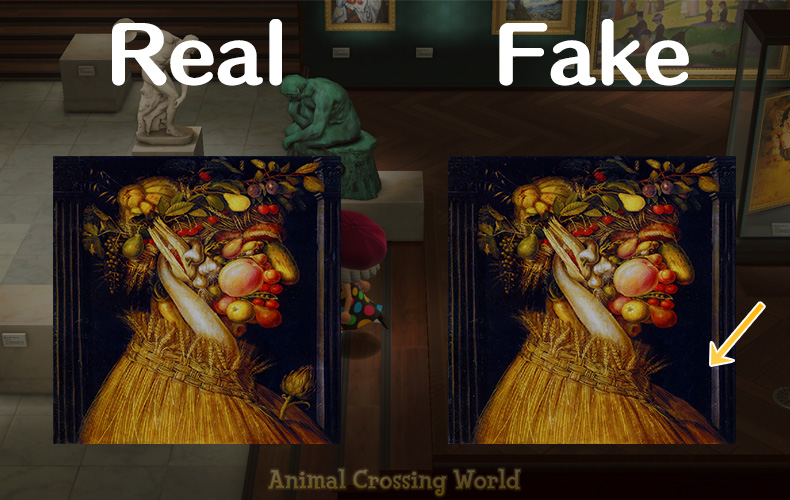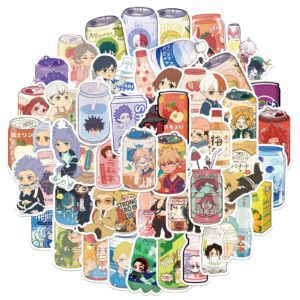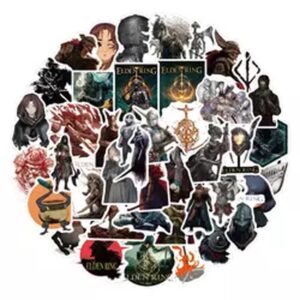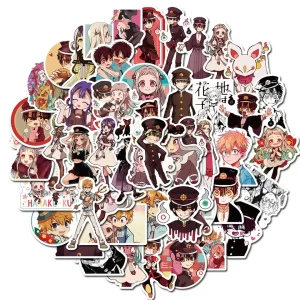In the enchanting virtual world of Animal Crossing: New Horizons, players are immersed in a delightful experience filled with creativity, exploration, and companionship. Within this beloved game, a fascinating aspect awaits those who appreciate the beauty of art. Through the character Redd, players have the opportunity to acquire paintings and sculptures to adorn their virtual homes and islands. However, beware of the perils that come with Redd’s offerings, as counterfeit art can sneak its way into your collection.
The ability to distinguish between genuine and fake art becomes crucial in Animal Crossing: New Horizons. The importance of acquiring authentic pieces extends beyond mere aesthetics. As an aspiring connoisseur, it is vital to delve into the art world of the game and grasp the intricacies of identifying counterfeit art. With so much at stake, navigating the world of Redd’s Treasure Trawler can be both exciting and challenging.
Fear not, for this article serves as your compass, guiding you through the mysteries of genuine and fake paintings as well as sculptures. Presenting a comprehensive guide tailored specifically for players, we aim to equip you with the knowledge and insights needed to make informed decisions when acquiring art. Join us on this captivating journey as we explore the nuances of Redd’s art collection and unlock the secrets of Animal Crossing: New Horizons’ art market.
Enter the Art World of Animal Crossing: New Horizons
Animal Crossing: New Horizons takes players on a captivating journey into a vibrant virtual world where creativity knows no bounds. Within this immersive experience lies an intriguing art world, spearheaded by the enigmatic character known as Redd. As players venture deeper into the game, they will encounter Redd and find themselves enticed by his Treasure Trawler, a vessel teeming with an assortment of paintings and sculptures.
Redd, the mischievous fox, operates as an art dealer in the game. His arrival in your town is unpredictable, making it an exhilarating event when he shows up with his Treasure Trawler docked at the secret beach. Accessing Redd’s treasure trove is an adventure within itself, adding an element of surprise and anticipation every time he appears.
Once you find Redd’s Treasure Trawler, you can explore his collection of paintings and sculptures. Each artwork holds its own allure, beckoning players with the promise of enhancing their virtual living spaces. The collection encompasses a remarkable range, from famous masterpieces to rare and obscure creations. It is a testament to the game’s homage to art history and its celebration of creativity across different mediums.
Art in Animal Crossing: New Horizons holds great significance beyond mere aesthetics. Acquiring and displaying pieces of art can transform your island, infusing it with a unique personality and charm. The presence of exquisite paintings and sculptures can elevate the overall ambiance, creating an atmosphere that showcases your appreciation for art and serves as a reflection of your personal style.
Unraveling the Mystery: Genuine vs. Counterfeit Art
In Animal Crossing: New Horizons, the art world is brimming with excitement and opportunities, thanks to the enigmatic character Redd. However, not all that glitters is gold, and not all that hangs on your virtual walls is genuine. This section will delve into the concept of genuine and counterfeit art within the game, equipping you with the knowledge needed to discern between the two.
Identifying genuine art can be a daunting task, but fear not! We have compiled a list of tips and tricks to help sharpen your art-hunting skills. When scrutinizing a piece, keep an eye out for visual cues that may indicate authenticity. Genuine art tends to exhibit the following characteristics:
1. Detail Consistency: Genuine artwork often showcases meticulous attention to detail, while counterfeits may appear rushed or lack precision. Zoom in and examine the finer elements of each piece for discrepancies.
2. Authentic Brushstrokes: Paintings with brushstrokes that appear natural and fluid are more likely to be genuine. Counterfeit art may exhibit mechanical, copied strokes that lack an artist’s personal touch.
3. Proper Perspective: Pay attention to perspective and proportions within the artwork. Genuine pieces typically uphold correct artistic principles, while counterfeits may feature distortions or incorrect scaling.
4. Historical Accuracy: Certain paintings in the game draw inspiration from real-world masterpieces. Familiarize yourself with famous artworks to compare details and ensure historical accuracy.
Now, let’s discuss the implications of acquiring counterfeit art. While Redd’s deals may seem tempting, succumbing to counterfeit treasures can have dire consequences for your island. Displaying counterfeit pieces may lead to disheartened villagers and a decrease in your island’s overall aesthetic appeal. Moreover, counterfeit art cannot be donated to your island’s museum, robbing you of valuable cultural contributions.
To avoid the pitfalls of counterfeit art, exercise caution when making purchases from Redd. Remember to assess each piece carefully using the tips we’ve provided. By striving for authenticity, you reward yourself with a genuine sense of accomplishment and contribute to the aesthetic harmony of your island.
As you venture into the art-filled realms of Animal Crossing: New Horizons, keep these insights in mind. With an eagle eye for detail and a dedication to discerning genuine from counterfeit, you’ll become an esteemed art aficionado in no time. Stay tuned for the subsequent sections of our guide as we unravel the complexities of paintings and sculptures in our quest for artistic mastery.
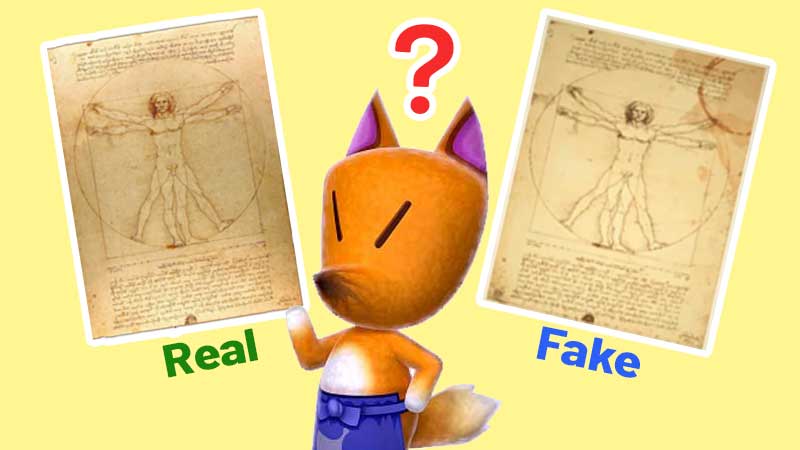
Paintings: Spotting the Real from the Fake
In Animal Crossing: New Horizons, the world of art is teeming with exquisite paintings that can enhance the beauty of your island. However, care must be taken when acquiring art pieces, as sly fox Redd is known for peddling both genuine and counterfeit works. To help you navigate this artistic minefield, we will explore a variety of paintings available in the game and highlight the key differences between genuine and counterfeit versions.
Detailed descriptions and visual references play a crucial role in aiding players to recognize authentic paintings. When it comes to the famous “Amazing Painting,” for example, be on the lookout for the genuine article to include a woman with a mischievous smile, while the fake version may depict her with a distinct frown. Similarly, the enchanting “Wistful Painting” should feature a Mona Lisa-inspired character gazing to the right, whereas the forgery will have her looking left.
To further assist you in your quest for authentic art, let’s delve into a few examples that demonstrate the process of differentiation. The captivating “Flowery Painting” is renowned for its vibrant blossoms, typically adorning the top left of the canvas on the genuine piece. Conversely, the fake version may feature flowers in the bottom right corner, a telltale sign of a counterfeit creation.
Another example is the intriguing “Glowing Painting,” which showcases an ethereal figure holding a radiant ball. In the genuine version, this figure will appear quite rounded, while the counterfeit might present a noticeably angular shape. Keep in mind that these are just a few instances among the expansive collection of paintings in the game, each with its own distinct features to aid in differentiation.
By familiarizing yourself with the nuances of genuine and counterfeit paintings, you can confidently build an art collection that truly reflects your refined tastes. Remember, it’s not just about embellishing your island; it’s about appreciating the craftsmanship and authenticity behind each piece. So, keep your eyes peeled for these key differences, and soon you’ll become an esteemed art connoisseur in Animal Crossing: New Horizons.
Sculptures: Distinguishing Authenticity
In Animal Crossing: New Horizons, the art world is not limited to paintings alone. The game offers a variety of intricate sculptures, each with its own charm and allure. However, the challenge lies in distinguishing the genuine sculptures from the clever counterfeits. To help you navigate this artistic maze, we have compiled a comprehensive breakdown of the details to look for in determining the authenticity of sculptures within the game.
When examining sculptures in Animal Crossing: New Horizons, pay close attention to the intricate details. Here are some key characteristics to observe:
- Proportions: Authentic sculptures are meticulously crafted with precise proportions. Take note of the size and shape of various elements in the sculpture, such as the wings, limbs, or facial features. Counterfeits may exhibit disproportionate or exaggerated attributes.
- Texture and Finish: Genuine sculptures often feature smooth textures and meticulous finishes. Run your character’s fingertips over the sculpture’s surface and observe any bumps, rough patches, or inconsistencies that may indicate a forgery.
- Weight and Materials: Real sculptures tend to have a weight that corresponds to the material they are crafted from. Pay attention to the weight of the sculpture when carrying it in your character’s hands. Additionally, consider the material used, whether it’s stone, metal, or wood, as this can be a telling characteristic of its authenticity.
To reinforce these concepts, let’s explore a couple of examples – one real and one fake sculpture – to highlight specific characteristics to observe.
The Informative Bust: The genuine Informative Bust sculpture in Animal Crossing: New Horizons typically features a finely carved face with delicate detailing. Take note of the expressions, wrinkles, and unique features that bring the statue to life. In contrast, a counterfeit version may have a less nuanced expression and lack attention to detail, making it appear flat or generic.
The Serene Goddess: A real Serene Goddess sculpture will exude a sense of tranquility and grace. Notice the impeccable craftsmanship, fluid lines, and subtle curves that make the sculpture come alive. On the other hand, a fake Serene Goddess might have exaggerated proportions, awkward angles, or noticeable imperfections, indicating it is not an authentic piece.
By familiarizing yourself with these specific characteristics and observing the nuances of sculptures in Animal Crossing: New Horizons, you can become an expert in distinguishing between genuine and counterfeit pieces. Remember, patience and keen observation are crucial in the pursuit of authentic art for your virtual island.
The Art Market: Making Informed Decisions
When it comes to navigating the art market within Animal Crossing: New Horizons, it’s essential to approach Redd’s Treasure Trawler with a strategic mindset. By following some key strategies and taking informed steps, players can acquire art with confidence and enhance their island’s aesthetic allure.
Research is the pillar of success in the art market. Before making any purchase, dedicate some time to study the different paintings and sculptures available in the game. Familiarize yourself with their names, artists, and historical significance. This knowledge will not only deepen your appreciation for the art but also help you identify genuine pieces from counterfeits. Ultimately, becoming an art connoisseur will be instrumental in your decision-making process.
Another important aspect of the art market is understanding the prices. Different art pieces have varying values, and it’s crucial to recognize the fair market prices. While some desirable artworks may come at a higher cost, others might be more attainable. Recognizing the monetary worth of different pieces will enable you to make wise choices and manage your in-game budget accordingly.
In addition to understanding prices, evaluating the rarity of art pieces is key. Some artworks in Animal Crossing: New Horizons are considered extremely rare, making them highly sought after by players. By knowing which pieces are rare and understanding their significance, you can determine the value they bring to your island. This knowledge also allows you to make informed decisions about whether to prioritize acquiring certain pieces over others.
Managing limited resources is a challenge in any market, and the art market within the game is no exception. You may not always have an abundance of in-game currency or resources to invest in art. However, by adopting a strategic mindset, you can still make sound investment decisions. Consider focusing on acquiring art pieces that best complement your island’s theme or aesthetic preferences. Making intentional choices based on your vision will ensure that every piece of art adds value and enhances your overall gameplay experience.
Remember, the art market in Animal Crossing: New Horizons is ever-evolving, with new artworks periodically introduced by Redd. Continuously staying updated on the art available, studying the shifts in prices, and being attentive to the preferences of your fellow players can provide you with a competitive edge in the market.
By following these strategies, conducting thorough research, understanding prices, evaluating rarity, and managing limited resources, you can navigate Redd’s Treasure Trawler with confidence. Making informed decisions will not only enrich your in-game collection but also elevate your role as an art enthusiast within the world of Animal Crossing: New Horizons.
Conclusion: Becoming an Art Connoisseur
In conclusion, this guide has provided you with valuable insights on how to navigate the art world in Animal Crossing: New Horizons and distinguish between genuine and counterfeit pieces. By recapitulating the key points covered throughout this article, we aim to strengthen your ability to identify real and fake art, expanding your horizons as an art connoisseur.
First and foremost, understanding the nuances of genuine and counterfeit art is crucial. Pay attention to visual cues, such as brush strokes, color accuracy, and signature placement when examining paintings. For sculptures, focus on details like texture, weight, and even shadows to discern authenticity. By honing your observation skills, you’ll be equipped to make informed decisions when encountered with Redd’s treasures.
We encourage you to immerse yourself further in the art world of Animal Crossing: New Horizons. Delve into the rich collection of paintings and sculptures, allowing them to breathe life into your virtual island. Acquiring genuine art not only enhances the aesthetic appeal but also contributes to the cultural vibrancy of your in-game experience.
As always, Culture of Gaming remains your ultimate resource for comprehensive guides and insights. Our dedication to providing accurate and detailed information ensures that you stay well-equipped to unlock the full potential of your gaming endeavors. Continue to explore the vast gaming universe with us, and become the ultimate art connoisseur in Animal Crossing: New Horizons.
Remember, in the ever-evolving world of Redd’s art, challenge yourself to uncover the masterpieces and build a gallery that showcases your discerning eye. May your artistic ventures be fruitful, and your island be adorned with authentic works of art.
FAQs (Frequently Asked Questions)
- Q: What is the importance of distinguishing between genuine and counterfeit art in Animal Crossing: New Horizons?
A: Distinguishing between genuine and counterfeit art is important because genuine art pieces can be donated to the museum, enhancing its collection and earning the player valuable rewards. Counterfeit art, on the other hand, cannot be donated and may negatively impact the player’s island rating.
- Q: How can I identify genuine art in Animal Crossing: New Horizons?
A: To identify genuine art, pay close attention to details such as color, composition, and any visible discrepancies. Genuinely crafted pieces may also feature specific characteristics like signature markings or artist brushstroke irregularities.
- Q: What are the consequences of acquiring counterfeit art in the game?
A: Acquiring counterfeit art can result in negative consequences, such as reducing the player’s island rating. Additionally, displaying counterfeit art in the museum may lead to the discovery and subsequent removal of the entire art exhibit.
- Q: Can I sell counterfeit art to other players in Animal Crossing: New Horizons?
A: While it is possible to sell counterfeit art to other players, it is generally not recommended as it may lead to negative experiences for other players if they unknowingly acquire counterfeit art.
- Q: How can I make informed decisions when purchasing art from Redd’s Treasure Trawler?
A: To make informed decisions, conduct thorough research on art prices and rarity. Consider consulting online resources or discussing with other players to gain insights. Additionally, carefully evaluate the appearance and details of the art pieces before purchasing.




